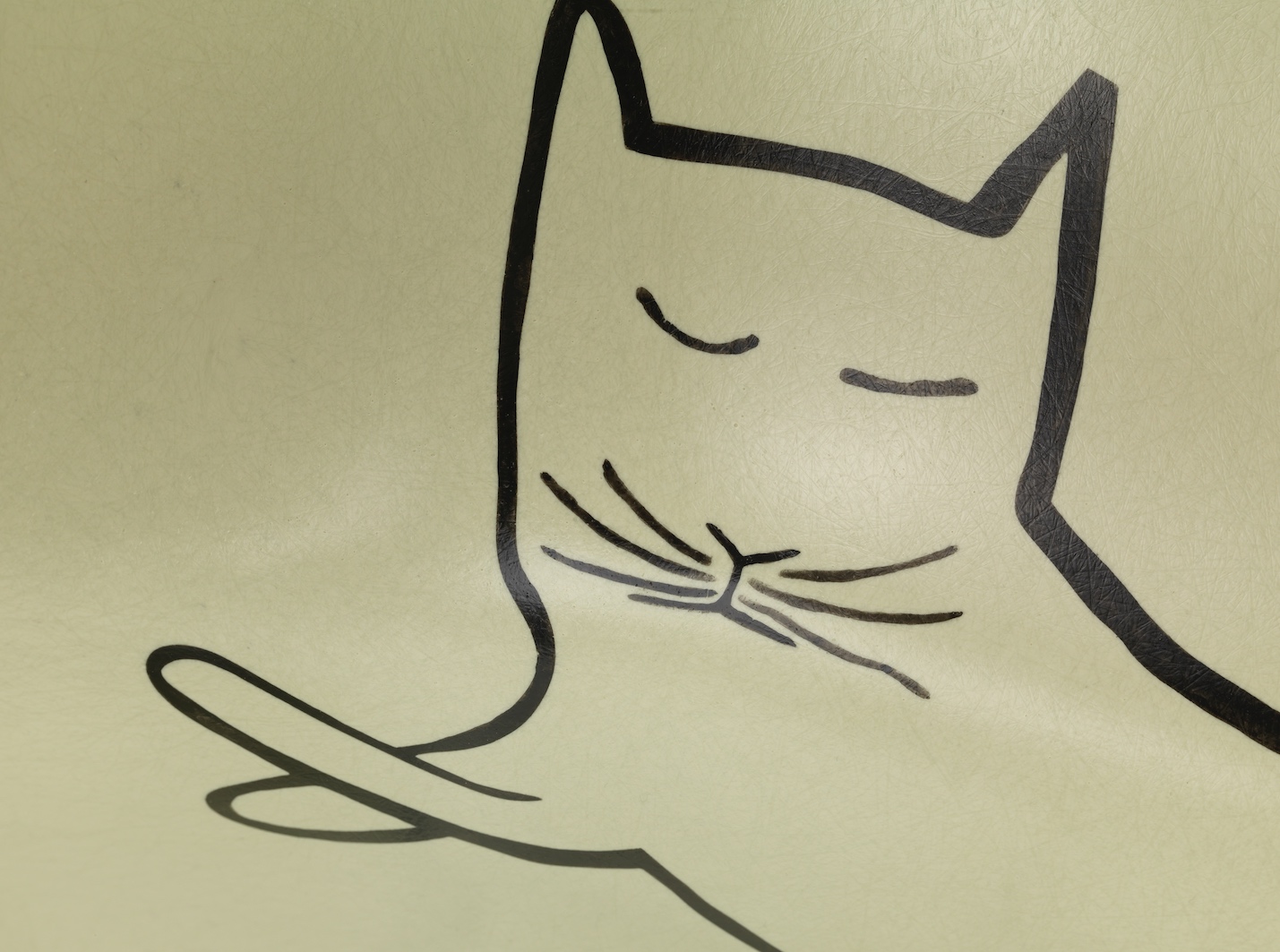Launched in 1950, the Eames Shell Chairs challenged the status quo. Honouring its design legacy, and in collaboration with the Eames Office and Herman Miller, Vitra is now producing a limited edition of 500 pieces
 Photography courtesy of Vitra, the Eames Office and with kind approval from The Saul Steinberg Foundation
Photography courtesy of Vitra, the Eames Office and with kind approval from The Saul Steinberg Foundation
As pioneers of 20th-century modern design, Charles and Ray Eames weren’t afraid to break the rules. From developing new technologies in moulded plywood to the couple’s imaginative use of integral dyes within their fiberglass chairs, their designs have been recreated and imitated repeatedly in the last decades.
Keeping this innovative spirit alive is a new collaboration between the Eames Office, Herman Miller and Vitra who teamed up with the Saul Steinberg Foundation to bring Steinberg’s playful modernism, and legendary Steinberg Cat, to 500 limited edition pieces of the Eames Fiberglass Armchair.
Originally designed by Charles and Ray Eames in the 1950s, the Eames Shell Chairs were the world’s first industrially mass-produced chairs with the seat and backrest formed from a one-piece plastic shell.
It was shortly after developing the Shell Chairs that the pair’s good friend and renowned artist, Saul Steinberg, came to visit the Eames Office in Los Angeles at 901 Washington Boulevard one summer. Here, Steinberg spontaneously picked up a brush and drew his signature figures, including that of a sleeping cat, on the furniture, floors and walls of the studio.
 Photography by Estate of Evelyn Hofer featuring Saul Steinberg with face in his hand, Long Island, 1978
Photography by Estate of Evelyn Hofer featuring Saul Steinberg with face in his hand, Long Island, 1978
While only two vintage specimens still exist today – the cat on the armchair shell and part of a female nude – both continue to live on and are a reflection of Steinberg’s favourite subjects. ‘The cat is of course one of the most recurring and significant subjects in Steinberg’s drawings,’ explains Francesca Pellicciari, co-curator of the Saul Steinberg exhibition at the Triennale Milano.
As Steinberg explained in 1967, ‘There is something more clever and more philosophical in cats. Cats probably represent the artists who are not only involved completely in the life that surround him. He passes through life and is not committed to the people around him. The cat is known to be anti-social.’
To recreate his iconic cat motif, a specialised firm scanned the original image of the Steinberg cat at the Eames Institute and generated a 3D file, which allowed for the precise application of Steinberg’s iconic cat figure.
 Photography by Peter Stackpole featuring Eames Fiberglass Armchair with cat by Saul Steinberg, 1950 (used under the license from Shutterstock.com)
Photography by Peter Stackpole featuring Eames Fiberglass Armchair with cat by Saul Steinberg, 1950 (used under the license from Shutterstock.com)
A testament to true craftsmanship, this is achieved manually by an artist, using paint which recreates the original look as close as possible on each individual shell. Much like Steinberg’s meticulous attention to detail and thoughtful approach to design, the shells are all hand-numbered, sealed with a protective lacquer and given a special label once the cat drawing has been applied.
Creating a contemporary version of a design classic, the generous seat and playful expression harmonises time-honoured craftsmanship and contemporary aesthetics. Manufactured in Germany and limited to just 500 pieces, with 300 available from Vitra in Europe and the Middle East and 200 from Herman Miller for the rest of the world, the Eames Fiberglass Armchair with Steinberg Cat demonstrates why modern interpretations to original designs remain as popular today as when they were first introduced.
Both Steinberg and the Eameses are often imitated, but it is their ingenuity, innovation and craftsmanship that can never be duplicated. The Eames Fiberglass Armchair with Steinberg Cat is a one-of-a-kind timepiece.
Sign up and get early access to the official sale here
Get a curated collection of design and architecture news in your inbox by signing up to our ICON Weekly newsletter

















